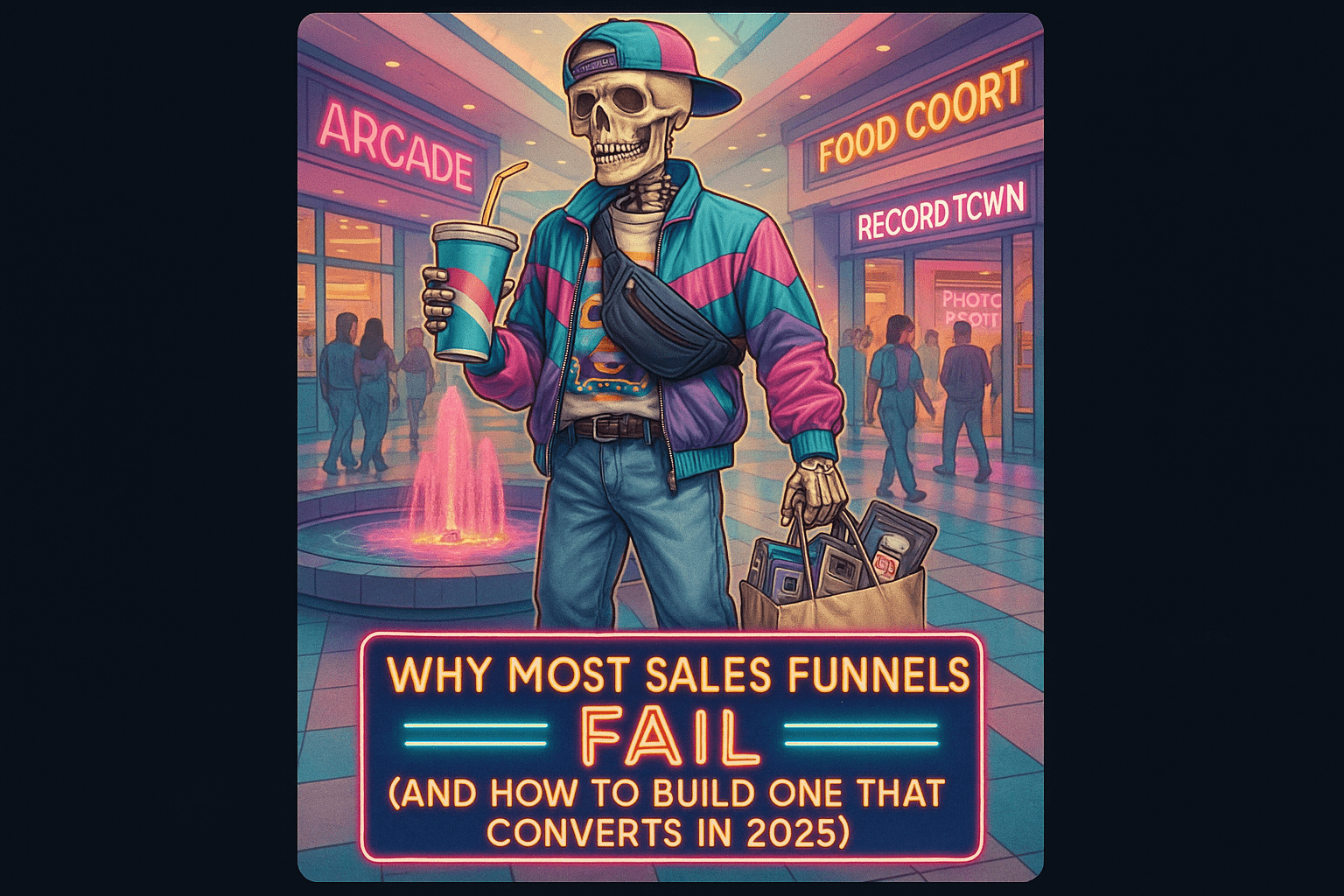
Digital funnels have become the go-to framework for turning strangers into leads and leads into paying customers. But with rising ad costs, short attention spans, and savvier audiences, many funnels simply aren’t converting like they used to. If your funnel feels like a leaky bucket—attracting attention but losing people along the way—it’s time to upgrade your approach.
Here’s how to build a sales funnel in 2025 that doesn’t just attract eyeballs, but drives conversions with precision.
1. Start With a Value-Driven Lead Magnet
The top of your funnel must offer something people actually want—not just a generic PDF. In 2025, attention is expensive, so lead magnets must be hyper-relevant, actionable, and immediately beneficial.
Action Step: Build a lead magnet that solves one specific problem for a specific audience. Examples: “5-Step Sales Call Script for Coaches” or “2025 Social Media Growth Calendar for Creatives.” Use tools like Canva or Notion to design quickly.
Stat to Know: HubSpot reports that personalized CTAs convert 202% better than generic ones. Relevance is everything at this stage.
2. Build a Nurture Sequence That Educates and Elevates
Once someone opts in, most businesses jump straight to the pitch. Don’t. Warm your leads by delivering consistent, valuable touchpoints that build trust and credibility.
Action Step: Create a 5–7 email sequence that educates, shares insights, showcases testimonials, and leads into your core offer. Each email should feel like a conversation—not a sales blast.
Example Flow:
- Day 1: Deliver the lead magnet and set expectations.
- Day 2: Share your origin story or key philosophy.
- Day 3: Solve a problem they likely face.
- Day 4: Show a transformation or client win.
- Day 5: Soft pitch your offer with urgency.
3. Use a Conversion-Focused Sales Page
Your sales page is where interest either deepens or dies. It needs to speak directly to pain points, highlight outcomes, and remove objections.
Action Step: Structure your sales page with these elements:
- Clear headline that promises transformation
- Social proof (testimonials, reviews, logos)
- Personal story or emotional hook
- Breakdown of benefits (not just features)
- FAQ section addressing common hesitations
- Strong CTA buttons throughout
Tool Tip: Use platforms like Leadpages or Swipe Pages to test high-converting templates fast.
4. Add a Low-Friction Offer or Tripwire
Not every lead is ready for your core product or service. Offering a small, affordable, high-value product builds buyer trust and increases your customer conversion rate.
Action Step: Create a tripwire offer priced under $50. Think: “Mini course,” “Toolkit,” or “1-on-1 Audit Call.” Deliver high perceived value with low risk.
Why It Works: This shifts your audience from “freebie seekers” to buyers—making them more likely to say yes to bigger offers later.
5. Track the Right Metrics and Optimize Ruthlessly
Funnels are dynamic—they require constant iteration. What works today may stall next month, so tracking and testing are non-negotiable.
Action Step: Monitor these funnel KPIs:
- Lead magnet opt-in rate
- Email open & click-through rates
- Sales page view-to-purchase rate
- Funnel drop-off points
Use tools like Google Analytics, ConvertKit, and Hotjar to uncover friction and test changes.
Stat to Know: Businesses that use A/B testing in their funnel process see 30% higher conversion rates on average (Invesp).
A funnel isn’t just a tool—it’s your 24/7 digital salesperson. But it only works if it’s built with empathy, driven by data, and focused on serving before selling. With attention more precious than ever, your funnel must deliver real value at every step to earn trust and drive action.
Your Move: Choose one stage of your current funnel to review this week. Is your lead magnet still relevant? Are your emails nurturing or nagging? Is your offer positioned clearly? Make one improvement and track the impact—it might be your biggest revenue win this quarter.


